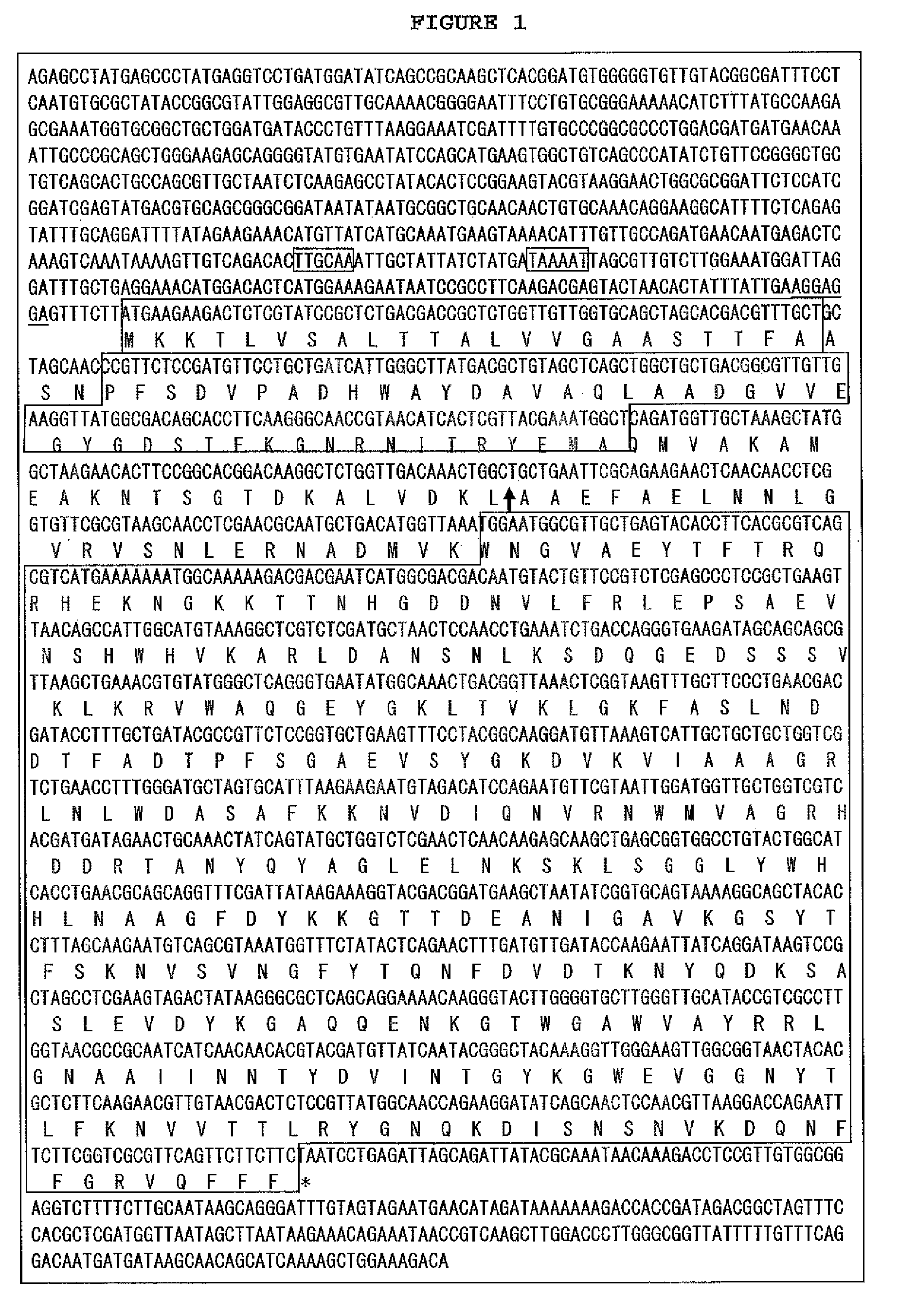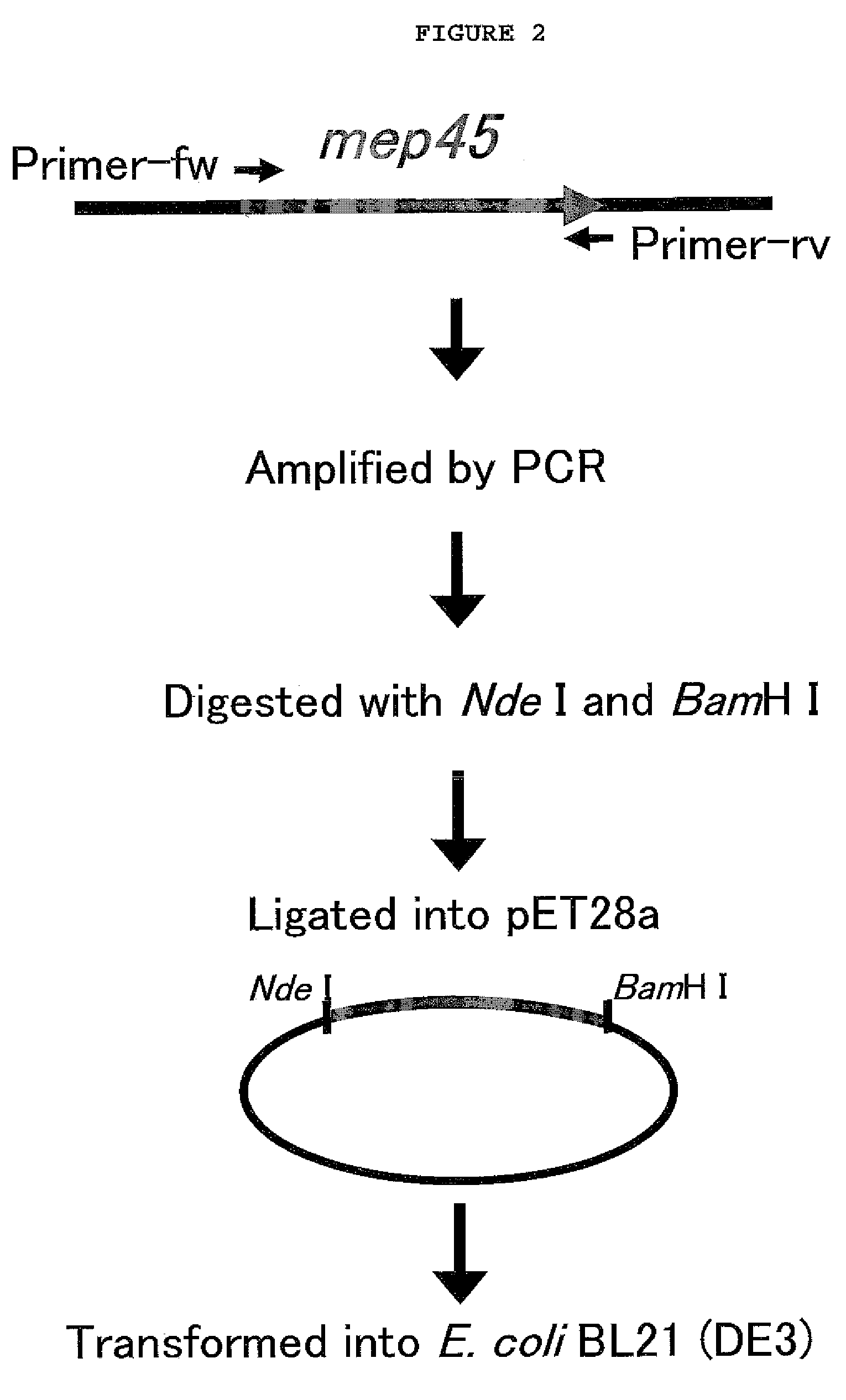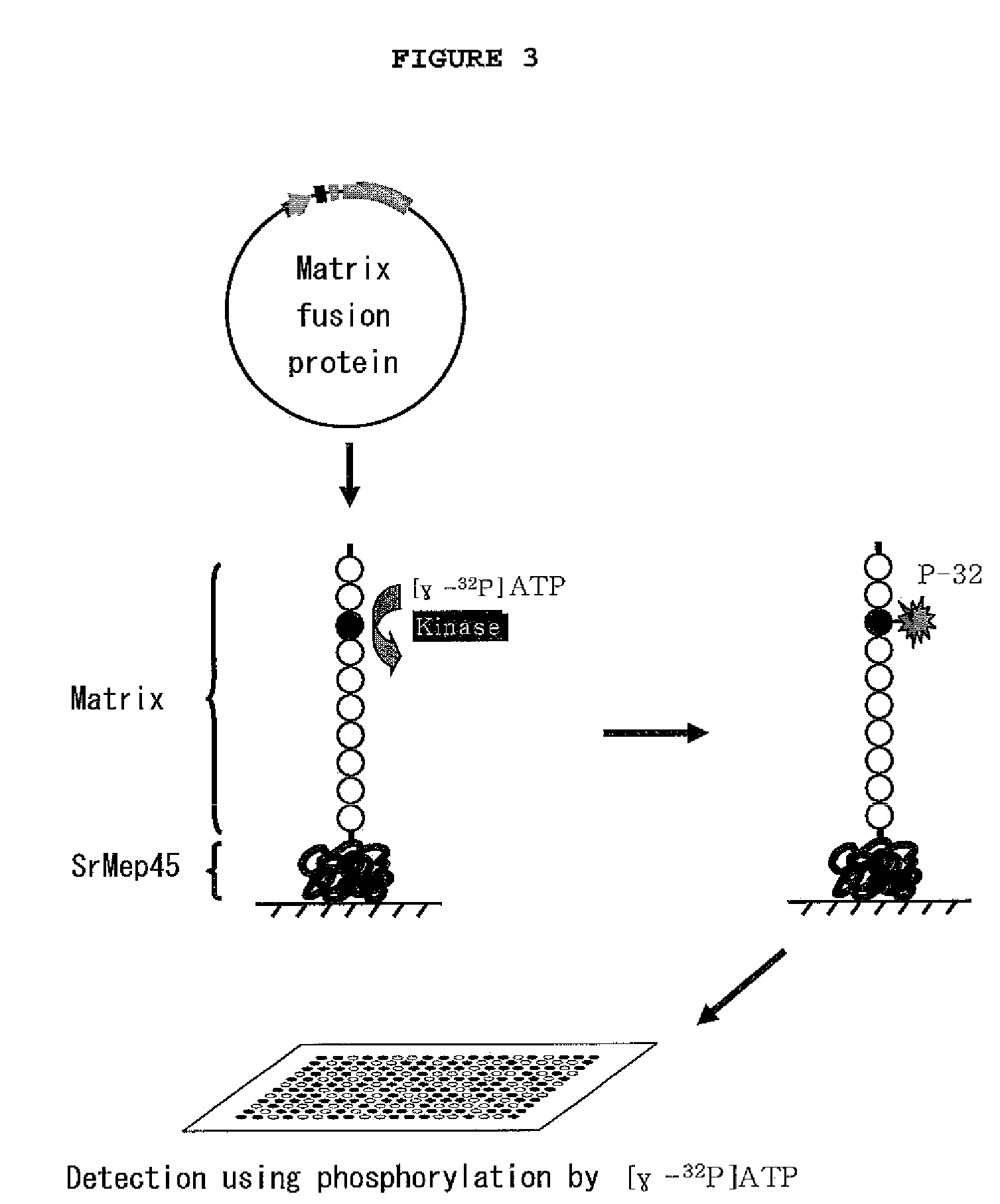Biochip for the detection of phosphorylation and the detection method using the same
a biochip and phosphorylation technology, applied in the field of biochip for detecting phosphorylation and a detection method using the same, can solve the problems of inconvenient use, high labor intensity, and slow method, and achieve the effects of simple process, increased sensitivity, and time saving
- Summary
- Abstract
- Description
- Claims
- Application Information
AI Technical Summary
Benefits of technology
Problems solved by technology
Method used
Image
Examples
example 1
Preparation of Elevated Protein-Substrate Fusion Protein
[0066] Cloning of SrMep45-Substrate Fusion Protein
[0067]To prepare SrMep45 (Selenomonas ruminantium membrane protein)-substrate fusion protein, the PCR product obtained by PCR amplification with chromosome DNA of Selenomonas ruminantium subsp. lactilytica, ATCC 19205) (Kanegasaki, S., and Takahashi, H., J. Bacteriol. 93, 456-463, 1967) and plasmid were cloned (FIG. 1).
[0068]For the cloning of each substrate (AAKIQASFRGHMARKK; SEQ. ID. NO: 1, PKTPKKAKKL; SEQ. ID. NO: 2, or EPPLSQQAFADLWKK; SEQ. ID. NO: 3) for PKC (Protein Kinase C), cdc2-PK (cdc2 Protein Kinase) and DNA-PK (DNA-dependent Protein Kinase), PCR was performed using pSrMep45 as a template with primers PKC-Fw-Nde (5′-CATCATATGGCTGCTAAAATTCAAGCTTCTTTTCGTGGTCATATGGCTCGTAAAAAAGCTAGCAACCCGTTCTCCGATG-3′; SEQ. ID. NO: 4), PKC-Rv-Bam (5′-GACGGATCCTTATTTTTTACGAGCCATATGACCACGAAAAGAAGCTTGAATTTTAGCAGCGAAGAAGAACTGAACGCGACCGAAG-3′; SEQ. ID. NO: 5), cdc2-MP-Fw-Nde (5′-CATCATATGCCTA...
example 2
Construction of Biochip
[0075]To fix substrate on the aldehyde-treated slide glass (Nuricell Inc., Korea), 0.1 mg / ml of the Mep45-kinase substrate fusion protein or 1.25 μg / ml of peptide substrate (Promega, Madison, Wis.) was integrated. Particularly, the recombinant Mep45-kinase substrate fusion protein solution (10% glycerol, PBS, pH 7.5) was prepared at the concentration of 0.1 mg / ml, and this substrate solution was integrated on the aldehyde-treated slide glass at the spot intervals of 300 μm by using microarray device (Genetix Ltd, UK). The size of the spot was regulated to be 300 μm. The integrated biochip was reacted in a humid chamber at room temperature for one hour, leading to fixation.
example 3
Confirmation of Phosphorylating Conditions between kinase and substrate using [γ-32P]ATP
[0076]The biochip constructed in Example 2 was washed three times with PBS (200 mM NaCl, 3 mM KCl, 2 mM KH2PO4, 1 mM Na2HPO4, pH 7.5), followed by reaction of the kinase and substrate on the chip. Particularly, the chip was washed with kinase buffer (40 mM Tris-HCl, 20 mM MgCl2, 0.1 mg / ml BSA, pH 7.5) once. Then, 50 μl of kinase reaction solution (kinase buffer containing 100 μM ATP, [γ-32P]ATP (0.1˜0.6 μCi) (GE Healthcare Life Sciences, UK) and 0.01˜50 unit / ml kinase of recombinant Mep45-substrate fusion protein) was distributed on the surface of the biochip. The biochip was covered with cover well, followed by reaction for one hour. One hour later, the biochip was washed with washing buffer three times, followed by washing again with PBS. Centrifugation was performed at 200×g for one minute to eliminate remaining moisture completely. The reacted biochip was sensitized on X-ray film or screen of...
PUM
| Property | Measurement | Unit |
|---|---|---|
| diameter | aaaaa | aaaaa |
| diameter | aaaaa | aaaaa |
| diameter | aaaaa | aaaaa |
Abstract
Description
Claims
Application Information
 Login to View More
Login to View More - R&D
- Intellectual Property
- Life Sciences
- Materials
- Tech Scout
- Unparalleled Data Quality
- Higher Quality Content
- 60% Fewer Hallucinations
Browse by: Latest US Patents, China's latest patents, Technical Efficacy Thesaurus, Application Domain, Technology Topic, Popular Technical Reports.
© 2025 PatSnap. All rights reserved.Legal|Privacy policy|Modern Slavery Act Transparency Statement|Sitemap|About US| Contact US: help@patsnap.com



